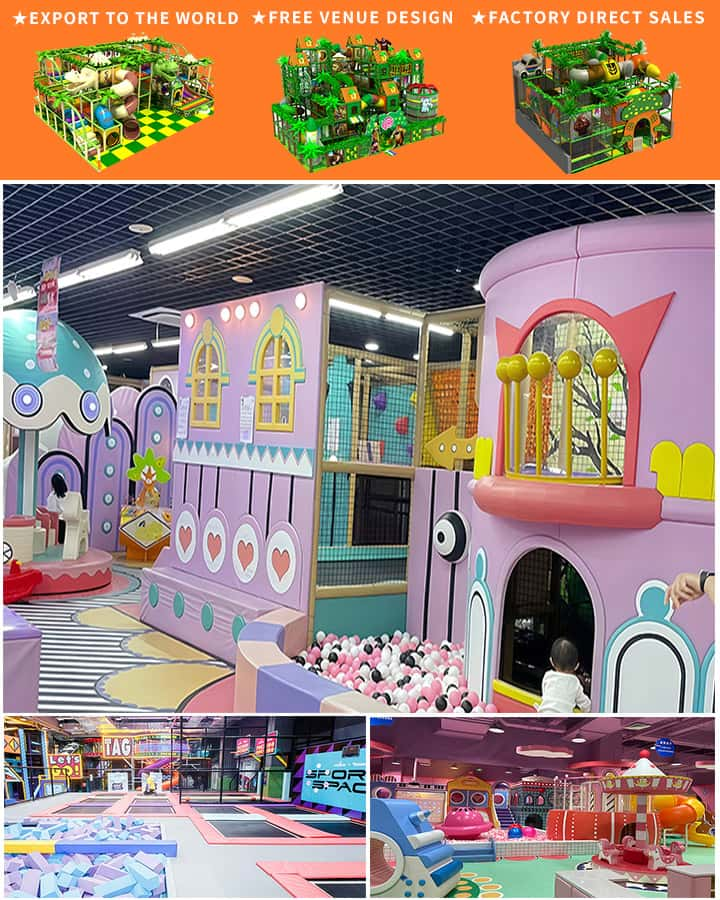Building an indoor playground is a fantastic way to provide children with a fun and safe environment for physical activity, even in less-than-ideal weather conditions. However, planning such a project involves understanding various cost components to ensure the venture is both feasible and financially viable. This article delves into the key factors that affect the cost to build an indoor playground.
Factors Influencing the Cost to Build an Indoor Playground
Location and Size of the Venue The first major consideration when estimating costs is the location and size of the indoor playground. Urban areas often come with higher real estate prices, which can significantly increase initial expenses. Additionally, larger venues will require more materials and labor, contributing to higher construction costs. Rent, lease terms, and local zoning regulations also play crucial roles.
Equipment and Installation The types and quality of play equipment you choose are significant cost drivers. Basic structures like slides, climbing frames, ball pits, and trampolines vary in price based on material, durability, and safety standards. Custom installations might be necessary to ensure the equipment fits perfectly within your chosen space, adding to labor costs.
Safety Features Safety is paramount in any playground, and indoor facilities are no exception. Investing in high-quality safety mats, cushioned flooring, and soft play areas will enhance protection for young users but will also add to the overall budget. Safety features often require professional installation, further increasing costs.
Design and Customization A unique, themed design can set an indoor playground apart from competitors, but it comes at a price. Customization options like branded colors, logos, or specific themes can elevate the customer experience but require additional investment in design and possibly custom manufacturing processes.

Lighting and Ventilation Proper lighting and ventilation systems are essential for creating a comfortable and safe environment. Energy-efficient LED lighting systems and advanced HVAC units may have higher upfront costs but can save money in the long run through reduced energy consumption.
Soft Play Areas Soft play areas designed for toddlers usually include foam shapes, tunnels, and interactive elements. While they provide excellent entertainment for younger children, they can be relatively expensive due to the specialized materials used for safety and hygiene reasons.
Regulatory Compliance Ensuring that the indoor playground complies with local, state, and federal regulations is non-negotiable. This may involve consultations with engineers, architects, and safety inspectors, as well as potential modifications to the facility. These professional services will contribute to the total cost.
Cost Breakdown Example
Assuming a mid-sized indoor playground (approximately 2,000 square feet), a rough cost breakdown might look something like this:
- Venue Costs: \(50,000 - \)200,000 (including rent/lease deposits and renovations)
- Play Equipment: \(30,000 - \)100,000
- Safety Features: \(20,000 - \)50,000
- Design and Customization: \(10,000 - \)30,000
- Lighting and Ventilation: \(15,000 - \)30,000
- Soft Play Areas: \(15,000 - \)35,000
- Regulatory Compliance: \(5,000 - \)20,000
- Miscellaneous (contingencies, permits, etc.): \(10,000 - \)20,000
Total Estimated Cost: \(165,000 - \)455,000
Budgeting Tips
- Prioritize Expenses: Identify must-have features versus nice-to-have elements to help prioritize spending.
- Seek Professional Advice: Engaging experts in playground design and safety regulation can prevent costly mistakes.
- Research Suppliers: Shop around for the best deals on equipment and materials without compromising on quality.
- Consider Long-term Operational Costs: Beyond the initial build, factor in ongoing maintenance, staffing, insurance, and utilities.
Conclusion
Building an indoor playground requires careful planning and a thorough understanding of various cost components. While the initial investment can be substantial, a well-designed and safe indoor playground offers long-term benefits by providing a consistent revenue stream and a valuable community asset. With prudent budgeting and strategic planning, your indoor playground can become a thriving hub of activity and joy for children and families alike




